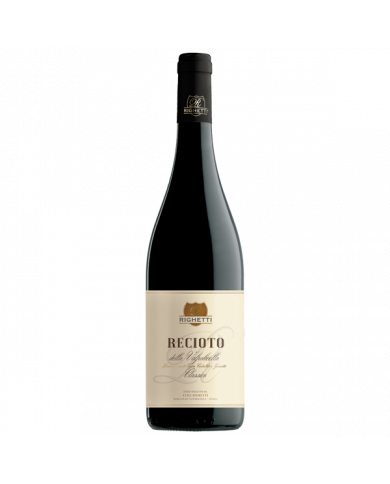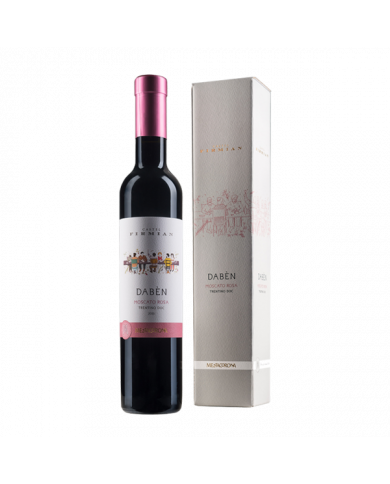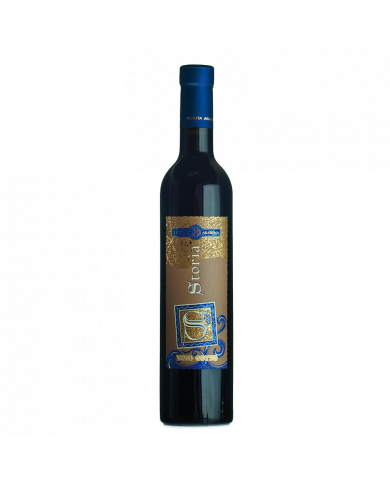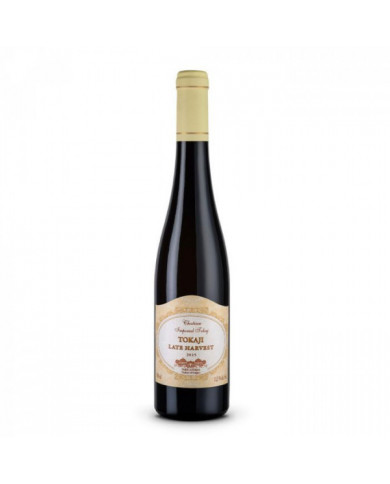The grapes, the same used for the production of Amarone, are left to dry in the plateaus for a few months and pressed in March when they have reached their maximum sugar concentration.
Fruit of the natural drying of aromatic grapes in the generous sun of a corner of Magna Graecia, Hekate is a naturally sweet Sicilian IGT passito.
This is a remarkable example of a traditional Chianti Vin Santo. It comes from grapes harvested from a single vineyard of 1 hectare cultivated with Malvasia di Toscana, Trebbiano Toscano and San Colombano. The grapes are dried for 3 months before pressing and aged in 100-litre oak barrels for 3 years before bottling and a further 3 months of aging in the cellar before being marketed. It displays aromas and flavors of dried fig, nuts, sultanas, leather and balsamic hints that make it a wonderful accompaniment to a cheese platter. A fine example of a traditionally produced fine dessert wine. Suitable for bottle aging up to 25 years after release.
The Moscato Rosa vine is a very ancient vine, of probable Greek origins which, passing through Sicily, arrived in Trentino in the mid-nineteenth century. The name seems to derive more from the primary aroma of rose that characterizes this aromatic vine, than from the color of the berry, which is actually bluish-black. Moscato Rosa is very delicate to cultivate as it is subject to various problems in flowering and ripening which greatly reduce its production capacity. For all these reasons, as well as being noble, it is also a precious wine, also due to its great ability to accumulate large quantities of sugar. This wine is obtained from small vineyards located on the alluvial fan of the town of Pressano, north of Trento, at about 250-300 metres, facing south-southwest on clayey-limestone soils and in a well-ventilated area to avoid health problems and allow the grapes the achievement of a perfect level of aromatic and sugar ripening. The grapes are harvested by hand very late after a natural drying on the vine and, after destemming, are subjected to traditional vinification with the addition of selected yeasts at a temperature of 22-24┬░C for 6-8 days. Then with the use of cold (5┬░C), the fermentation process is naturally blocked with the consequent maintenance of the desired residual sugar. It then continues with the collection of only flower wine without pressing of the pomace. This is followed by conservation in steel for a few months, always at a low temperature to preserve the aromas of this elegant wine
Bright amber yellow, the nose expresses a wonderful olfactory profile composed of notes of apricot and peach, dried figs and honey, aromatic herbs and mineral notes. Intense and bewitching aromas, solar and Mediterranean, which open to an immense taste for complexity, perfect in the fusion of sweetness, flavor and softness. Very long, interminable, poignant. Strictly at the end of a meal, ŌĆ£Ben Ry├®ŌĆØ is a perfect accompaniment to blue or very aged cheeses and foie gras. Also excellent on ricotta desserts and dry pastries.
Bright amber yellow, the nose expresses a wonderful olfactory profile composed of notes of apricot and peach, dried figs and honey, aromatic herbs and mineral notes. Intense and bewitching aromas, solar and Mediterranean, which open to an immense taste for complexity, perfect in the fusion of sweetness, flavor and softness. Very long, interminable, poignant. Strictly at the end of a meal, ŌĆ£Ben Ry├®ŌĆØ is a perfect accompaniment to blue or very aged cheeses and foie gras. Also excellent on ricotta desserts and dry pastries.
The name means that it is a product that originates from history. In fact, in the past years it was customary in peasant houses that, at the birth of a child, especially the firstborn, the father or grandfather of the unborn child would produce a particular wine at the first harvest, the "cooked wine". This wine was kept for years in small wooden barrels. It was opened, to offer it to diners, on the occasion of the First Communion and subsequently for the marriage of the child. Deliciously accompanied by typical Abruzzo desserts, sweets with almonds or in any case dry pasta.
The care and effort of an extreme production work are illuminated by golden flashes that bring with them an intriguing bouquet, full of sweetness and freshness.
Discover the Delight of Sweet Wines: A Journey for Your Senses
Sweet wines can be a real treat for your senses. The way sweet wine touches your taste buds and nostrils with its rich fragrances will make you feel in heaven. The magic of sweet wines is unique and is becoming increasingly popular among consumers seeking a unique sensory experience. If you are looking to discover the beauty of sweet wines, then you are in the right place. This article will explore some of the best sweet wines and how to choose the right one for you.
What is a Sweet Wine?
First of all, we need to clarify what a sweet wine is. A sweet wine is a wine that contains a certain amount of sugar. This sugar can be added during fermentation or it can be added afterwards. The amount of sugar in sweet wine can vary from slightly sweet to very sweet. Sweet wines are often sweeter than dry wines because they contain more sugar.
Most Popular Sweet Wines
Sweet wines can be divided into three broad categories: dessert wines, sparkling wines and aromatised wines. Dessert wines are those that are sweeter and more aromatic, such as Port, Sherry, Muscat and Madeira. Sparkling wines are carbonated wines such as Champagne, sparkling Muscat, Prosecco and Cava. Aromatised wines are those with a fruity flavour, such as Riesling, Gew├╝rztraminer and Gr├╝ner Veltliner.
How to Choose a Sweet Wine
If you are interested in trying a sweet wine, there are a few things to consider. First, you need to decide whether you want a dessert wine, a sparkling wine or a flavoured wine. You will also have to consider your budget and personal taste. If you are a beginner, you might want to start with a less expensive and less sweet wine, such as a Muscat or Riesling. If you are an expert, then you may want to explore rarer and more expensive wines such as a Port or Sherry.
How to Serve a Sweet Wine
If you have decided to try a sweet wine, it is important to serve it in the right way. Dessert wines should be served chilled, while sparkling and flavoured wines should be served at room temperature. The right temperature for a sweet wine varies depending on the type of wine, so be sure to read the labels before serving. Dessert wines should be served in larger dessert glasses, while sparkling and aromatised wines should be served in wine glasses.
How to Pair a Sweet Wine
One of the advantages of sweet wines is that they can be paired with many different dishes. Dessert wines can be paired with desserts, cheeses and meats. Sparkling wines can be paired with all kinds of dishes, from savoury to sweet. Aromatised wines are particularly versatile and can be paired with fish, meat and vegetable dishes.
Conclusion
Sweet wines are a fun and relaxing way to enjoy a meal or an evening. Whether you are a beginner or an expert, there is a sweet wine to suit your needs. Remember to choose the right wine for your meal, serve it at the right temperature and pair it correctly. If you follow these steps, you will definitely enjoy the deliciousness of sweet wines.





























